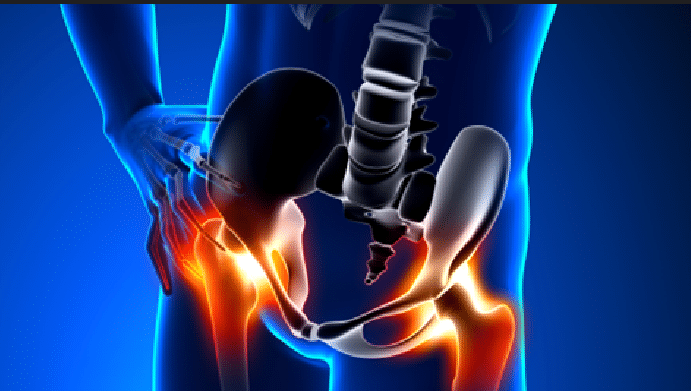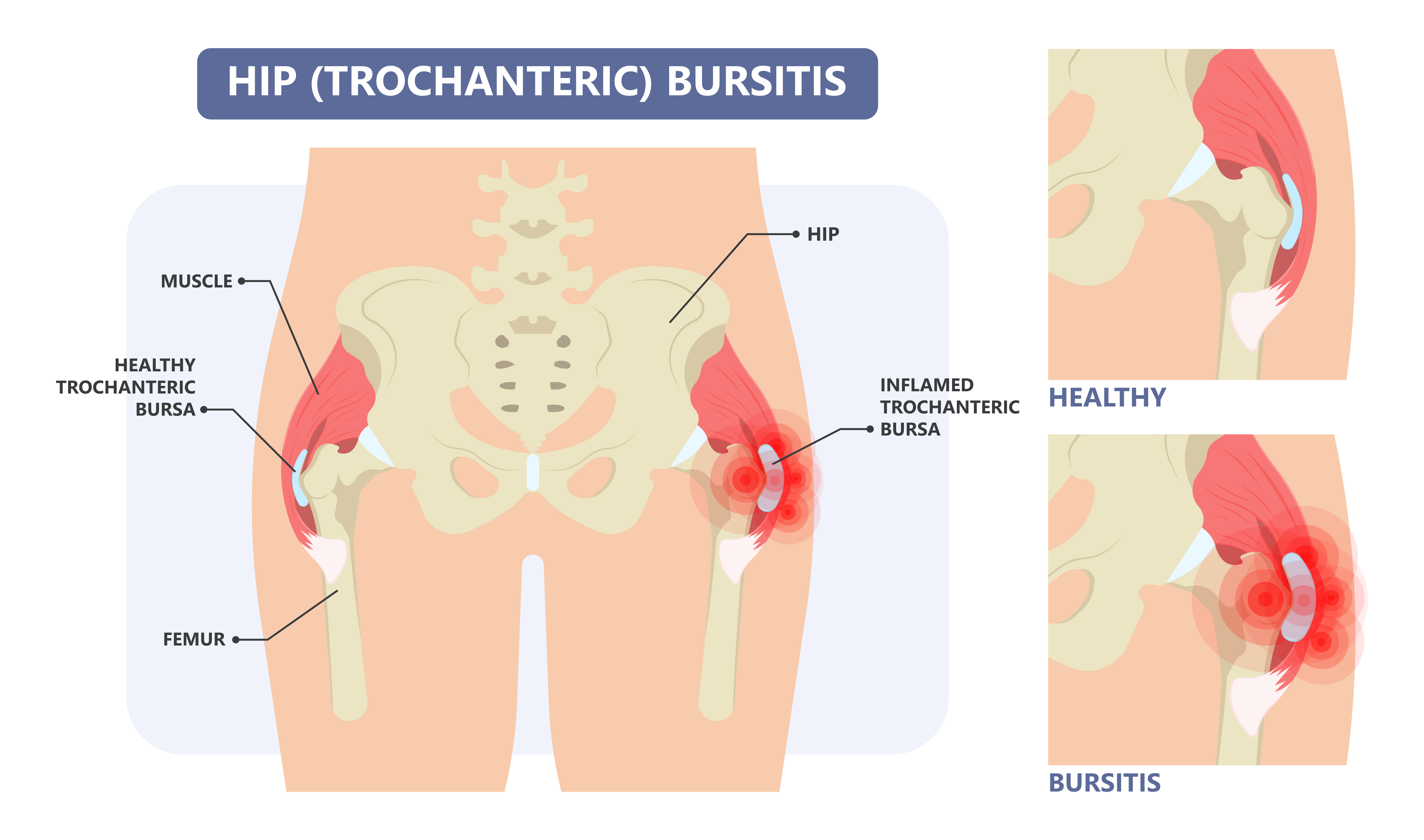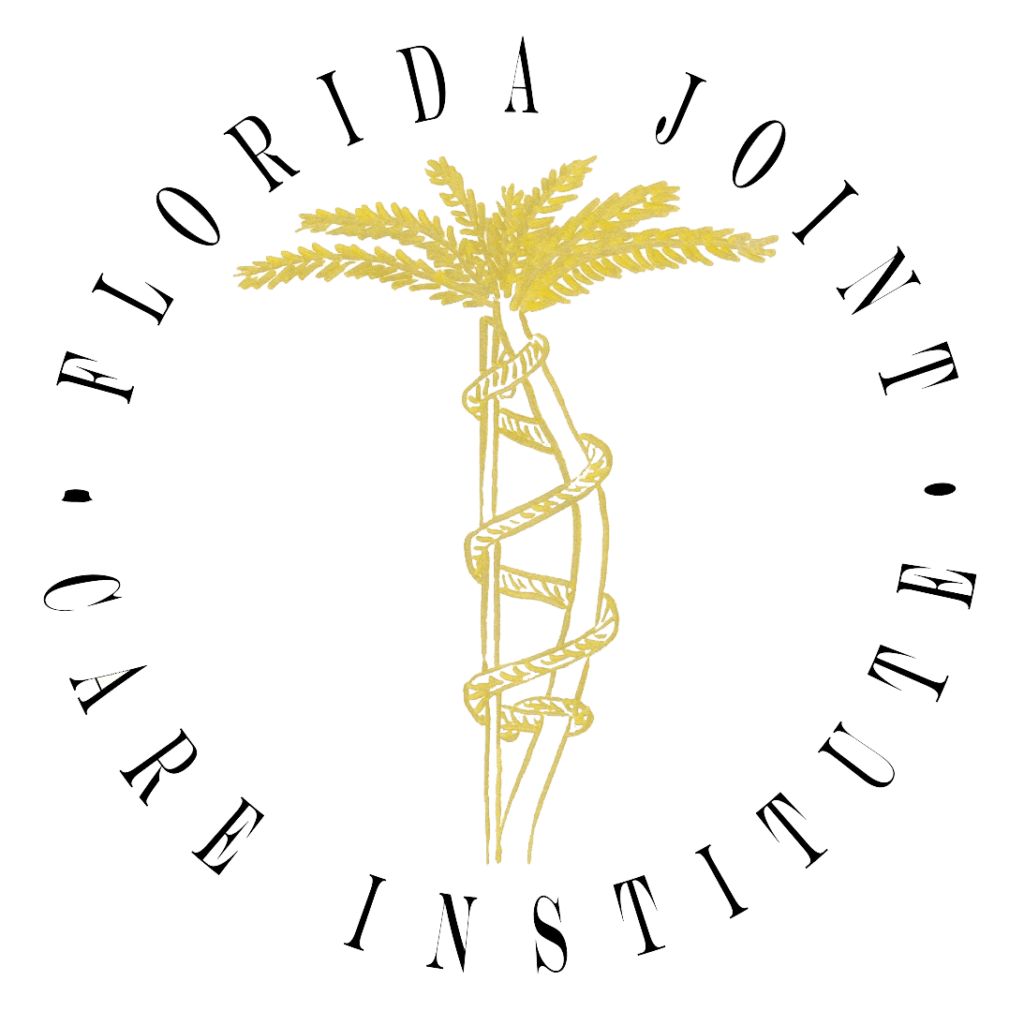Trochanteric Bursitis
Trochanteric bursitis is a common cause of chronic hip pain, often due to inflammation of the fluid-filled bursa located over the greater trochanter (the bony prominence on the side of your hip).
At Florida Joint Care Institute, our dedicated orthopedic team provides comprehensive diagnostic and treatment options to help you find relief and get back to your regular activities.
All content on this page has been medically reviewed in-house by Dr. Pashuk.

What is Trochanteric Bursitis?
Overview
Trochanteric bursitis occurs when the bursa on the outer part of your hip becomes irritated or inflamed leading to pain and stiffness. This condition can affect anyone—especially individuals who engage in repetitive hip movements or prolonged pressure on the lateral hip (e.g., side-sleeping on a hard surface).
- Inflamed Bursa: Caused by repeated stress, injury, or direct impact to the hip.
- Overuse or Repetitive Motion: Activities like running, cycling, or stair climbing can aggravate the bursa.
- Underlying Hip Issues: Arthritis, decreased flexibility, or misalignment can contribute to added stress on the hip.
Common Causes
- Sports & Exercise Routines: High-impact activities or improper form can lead to overuse injuries in the hip.
- Prolonged Standing or Walking: Occupations requiring continuous movement or weight-bearing can put excess strain on the bursa.
- Direct Trauma: Falls or bumps on the hip area may inflame or damage the bursa.
- Spinal or Lower Limb Imbalances: Back, knee, or ankle problems can alter gait, placing extra stress on the hip.

Symptoms of Plantar Fasciitis
If you’re dealing with trochanteric bursitis, you may experience:
- Pain on the Outer Hip: Often worsened by lying on the affected side, walking, or climbing stairs.
- Swelling or Tenderness: The side of the hip may feel warm or tender to the touch.
- Stiffness or Reduced Range of Motion: Difficulty moving the hip comfortably, especially after rest.
Monitor Your Condition
If your hip pain persists for more than a few days or continues to interfere with daily activities, schedule an evaluation at our Trinity clinic for professional diagnosis and treatment.
The Florida Joint Diagnosis Process
Physical Examination
Our specialists assess your hip alignment, range of motion, and pain triggers to localize the source of your pain.
Imaging Studies
X-rays are performed to rule out other hip conditions, such as arthritis. MRI or ultrasound might be ordered in certain situations.
Determine Next Steps
Once your diagnosis is made, we’ll discuss a tailored plan to help you reduce inflammation, relieve pain, and restore mobility.
Treatment Options
Non-Surgical
We offer both non-surgical and surgical approaches based on each patient’s unique needs and severity of symptoms:
- Rest & Lifestyle Modifications: Avoiding activities that aggravate hip pain, combined with a temporary reduction in impact exercises.
- Anti-Inflammatory Medications or Injections: NSAIDs or corticosteroid injections can provide effective short-term relief.
- Physical Therapy: Targeted stretching and strengthening exercises can reduce stress on the bursa providing longer lasting relief.
- Assistive Devices: Occasionally, using a cane or crutch can help minimize pressure on the affected hip during recovery.
Surgical
Surgery for trochanteric bursitis is relatively uncommon but may be considered if non-surgical treatments fail:
- Bursectomy: Surgical removal of the inflamed bursa.
- Tendon Repair: Repairing soft tissues if they are severely damaged.
- Post-Surgical Rehab: A structured physical therapy program to rebuild strength and mobility.
How to Prevent Trochanteric Bursitis
Taking a few preventative steps can reduce the likelihood of developing or worsening hip bursitis:
- Maintain Good Posture & Gait: Proper alignment when walking, standing, or running helps distribute hip stress evenly.
- Incorporate Regular Stretching & Strengthening Exercises: Focus on stretching and strengthening exercises, including your core, hips, and legs.
- Warm Up & Cool Down Properly: Gradual movements and stretches can prepare and relax the muscles around the hip.
- Choose Supportive Footwear: Shoes with adequate cushioning and arch support can lessen impact on your hips.
Serving the Trinity and Tampa Bay Areas
Visit Our Office
2165 Little Rd, Trinity, FL 34655
Our Plantar Fasciitis Service Areas
- Trinity
- New Port Richey
- Odessa
- Port Richey
- Greater Tampa Bay Area
Contact Us Today
Contact us today to learn more or get started. Our team of licensed professionals is ready to assist you with any questions or support you need!
